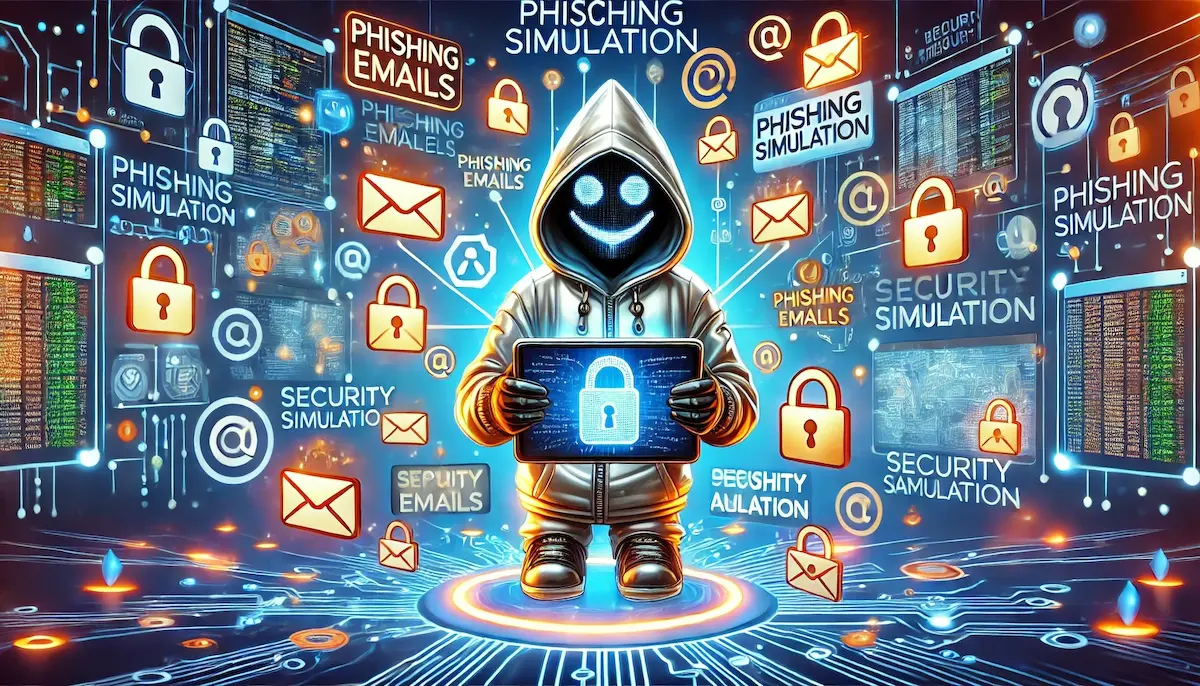Phishing simulation is a proactive cybersecurity strategy designed to test and educate employees on recognizing and responding to phishing attacks. By simulating real-world phishing scenarios, organizations can assess their employees’ susceptibility to such attacks, provide targeted training, and ultimately strengthen their overall security posture.
What is Phishing?
Phishing is a type of cyber attack in which attackers attempt to deceive individuals into providing sensitive information, such as usernames, passwords, and financial details, by posing as a trustworthy entity. These attacks are typically conducted through email, but they can also occur via text messages, social media, and other online platforms.
What is a Phishing Simulation?
A phishing simulation involves sending fake phishing emails to employees to gauge their reactions and ability to identify and report such threats. These simulations are designed to mimic real phishing attacks closely, providing a practical and safe way for employees to learn about and recognize phishing attempts.
Key Components of Phishing Simulation
Effective phishing simulation programs include several key components:
- Design and Planning: Creating realistic phishing scenarios tailored to the organization’s context, industry, and common attack vectors.
- Campaign Execution: Distributing simulated phishing emails to employees in a controlled manner.
- Monitoring and Analysis: Tracking how employees respond to the simulated phishing emails, including who clicks on links, submits information, or reports the email.
- Feedback and Training: Providing immediate feedback to employees who fall for the simulation, along with targeted training to help them recognize and avoid real phishing attacks in the future.
- Reporting and Metrics: Generating reports that detail the results of the simulation, including overall success rates, areas for improvement, and trends over time.
Benefits of Phishing Simulation
Implementing phishing simulation programs offers several significant benefits for organizations:
- Increased Awareness: Helps employees recognize phishing attempts and understand the tactics used by attackers.
- Behavioral Change: Encourages employees to adopt safer online behaviors and habits.
- Reduced Risk: Decreases the likelihood of successful phishing attacks, protecting sensitive information and reducing the risk of data breaches.
- Targeted Training: Identifies employees who may need additional training and provides them with the necessary resources to improve their cybersecurity awareness.
- Compliance: Helps organizations meet regulatory requirements related to cybersecurity training and awareness.
Implementing Phishing Simulation
Implementing an effective phishing simulation program involves several steps:
- Assessment: Evaluate the current level of phishing awareness among employees and identify specific training needs.
- Scenario Development: Create realistic phishing scenarios that reflect the types of attacks employees might encounter.
- Campaign Launch: Execute the phishing simulation campaign, ensuring that it is conducted in a controlled and ethical manner.
- Data Collection: Monitor and analyze employee responses to the simulated phishing emails.
- Feedback and Training: Provide immediate feedback to employees who fall for the simulation, along with targeted training to help them improve their phishing detection skills.
- Continuous Improvement: Regularly update the simulation scenarios and training materials to reflect the latest phishing tactics and trends.
The Future of Phishing Simulation
As phishing attacks continue to evolve, phishing simulation programs are expected to advance with several key trends:
- Advanced Scenarios: Developing more sophisticated and varied phishing scenarios to reflect the increasingly complex tactics used by attackers.
- AI and Machine Learning: Leveraging AI and machine learning to create adaptive simulations that respond to individual employee behaviors and knowledge gaps.
- Integration with Overall Security Strategy: Aligning phishing simulations with broader security initiatives, such as incident response planning and cybersecurity awareness training.
- Personalized Training: Providing customized training based on individual performance in phishing simulations, ensuring that each employee receives the support they need to improve.
- Gamification: Incorporating gamification elements to make phishing simulations more engaging and motivating for employees.
Conclusion
Phishing simulation is a valuable tool for enhancing cybersecurity awareness and reducing the risk of phishing attacks within an organization. By providing realistic, hands-on training experiences, phishing simulations help employees recognize and respond to phishing threats effectively. Blockfine thanks you for reading and hopes you found this article helpful.
